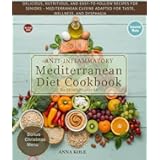Have you ever found yourself scrolling through your social media feed, feeling a tug at your heartstrings as someone shares their vulnerable moments, perhaps even their daily food diary? Much like the emotive background music in the video above, these personal glimpses, especially in a “what I ate today” format, resonate deeply with our own journeys. The simple mention of ‘Xiaohongshu’ in the video highlights a growing trend where platforms become canvases for sharing lifestyle, including our everyday healthy eating habits.
This kind of content often sparks both inspiration and a desire to improve our own wellness. While the video captures a brief, emotional sentiment, the underlying theme of documenting daily food choices is incredibly powerful. It offers a window into diverse dietary practices, encouraging many to reconsider their own nutritional pathways. Embracing a mindful approach to what we consume each day is truly a foundational step towards a healthier, more balanced life, transcending mere fleeting trends.
The Allure of “What I Ate Today” Content
The global fascination with “what I ate today” content, prevalent on platforms like Xiaohongshu, Instagram, and TikTok, is easily understood. These short-form videos and posts provide an authentic, often unvarnished, look into someone’s daily diet, which many find highly relatable. Viewers are actively seeking fresh meal inspiration, practical tips for food preparation, or even just a sense of camaraderie in their own healthy eating endeavors. Such content humanizes the often intimidating world of nutrition, making it accessible to a broader audience.
Furthermore, these food diaries act as a form of social accountability for creators, motivating them to maintain their dietary goals. On the other hand, the audience gains direct insights into how others structure their meals throughout a typical day. However, it is crucial for viewers to approach such content with a discerning eye, recognizing that individual dietary needs vary immensely. Personalized nutrition advice should always be considered alongside general inspiration drawn from these popular posts.
Navigating Healthy Eating on Social Media Platforms
Social media platforms like Xiaohongshu have become vibrant hubs for health and wellness discussions, particularly concerning food. Users actively share their culinary creations, dietary routines, and fitness journeys, creating extensive communities. This wealth of information can be incredibly beneficial for discovering new recipes, understanding diverse dietary approaches, and connecting with like-minded individuals. Nevertheless, this abundance also presents challenges, including the potential for misinformation or the promotion of unsustainable diet fads.
It is essential to cultivate critical thinking skills when consuming healthy eating content online. Rather than blindly adopting every trend, consider whether a particular recommendation aligns with your personal health objectives and scientific principles. Engage with creators who emphasize balance, moderation, and sustainable lifestyle changes, steering clear of extreme or overly restrictive advice. Platforms can be powerful tools for education and motivation, yet personal discernment remains your most important asset in this digital landscape.
Building a Sustainable Healthy Eating Framework
Developing a sustainable approach to healthy eating extends far beyond just observing what others consume; it requires a genuine understanding of your body’s specific needs. Focusing on a diverse intake of whole, unprocessed foods forms the cornerstone of any effective dietary plan. Incorporating a balanced array of macronutrients—proteins, carbohydrates, and healthy fats—ensures your body receives consistent energy and essential building blocks. Many individuals benefit significantly from prioritizing plant-based options, lean proteins, and complex carbohydrates in their daily meals.
Moreover, consistent hydration and adequate fiber intake play pivotal roles in maintaining optimal digestive health and overall vitality. While calorie counting might be helpful for some, focusing on nutrient density and mindful eating practices often yields more enduring benefits. A sustainable healthy eating framework emphasizes consistency over perfection, encouraging small, manageable changes that can be integrated seamlessly into your everyday routine. This deliberate, long-term perspective ultimately fosters improved health and enduring well-being.
Practical Tips for Incorporating More Nutritious Meals
Transforming your diet towards more nutritious meals doesn’t require drastic, sudden overhauls; rather, it thrives on thoughtful, incremental adjustments. Consider starting your day with a protein-rich breakfast, like Greek yogurt with berries or scrambled eggs, to stabilize blood sugar levels. Incorporating more vegetables into every meal, perhaps by adding a handful of spinach to your smoothie or extra broccoli to your stir-fry, is an excellent strategy. Preparing meals at home provides significantly more control over ingredients and portion sizes, reducing reliance on less healthy processed options.
Meal planning, even for just a few days in advance, can drastically reduce stress and improve dietary consistency, helping to avoid last-minute unhealthy choices. While social media can offer great meal inspiration, remember to adapt recipes to suit your personal tastes and dietary requirements. For instance, if a Xiaohongshu food post features a fried dish, consider baking or air-frying it instead for a healthier alternative. Prioritizing nutritious meals consistently is a journey, not a destination, fostering long-term positive habits.
Mindful Eating: Connecting with Your Food
Beyond the nutritional content, how we eat plays a crucial role in our overall well-being, leading many to embrace mindful eating practices. This approach involves paying full attention to the experience of eating, noticing the flavors, textures, and aromas of your food. It encourages you to slow down, savor each bite, and truly listen to your body’s hunger and fullness cues. In our fast-paced world, eating often becomes a secondary activity, performed while distracted by screens or work, which can hinder proper digestion and satisfaction.
Practicing mindful eating can help prevent overeating and cultivate a healthier relationship with food, moving away from emotional or habitual consumption. Before reaching for another serving, pause and assess your hunger level, considering if you are genuinely still hungry or merely eating out of habit. Engaging all your senses during mealtime transforms eating from a mere necessity into a deeply fulfilling and pleasurable experience. This connection to your food is a powerful tool in your overall healthy eating strategy.
Leveraging Digital Tools for Wellness, Responsibly
In today’s digital age, numerous tools and platforms, including vibrant communities on Xiaohongshu, are available to support your wellness journey, but responsible usage is key. Food tracking apps, while not for everyone, can offer valuable insights into your dietary patterns and nutritional intake. Online communities provide immense encouragement, allowing you to share successes, seek advice, and connect with individuals who share similar health goals. Many find motivation in seeing how others manage their daily food choices.
However, it is imperative to strike a balance, preventing these tools from fostering unhealthy obsessions or comparison traps. Focus on using them as aids for education and positive reinforcement, rather than as sources of self-criticism. Remember that real health goes beyond what is perfectly curated on a screen, encompassing mental, emotional, and physical well-being. Ultimately, your personal healthy eating journey should be guided by self-compassion and realistic expectations, enhancing your life in meaningful ways.











